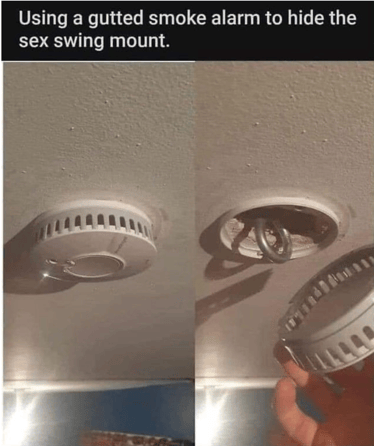Joke Du Jour:
Two policemen call the station on their radio. "Hello, is this the Sarge? Yes? We have a case here, Sarge. A woman has shot her husband dead for stepping on the floor she had just mopped." "Have you arrested the woman?" "No, sir. The floor is still wet."
Commercial Financing Lesson:
Did you know there was a time when money for commercial real estate lending was amazingly tight? For the past 30 years, we have lived in a world where banks have had tons of money with which to make commercial real estate loans.

Now to truly understand the significance of what I am about to share, it is important that you understand that there are, as of September 8, 2021, 4,951 FDIC insured commercial banks and savings institutions in the U.S. That includes Federal savings banks, which are the last of the survivors form the S&L Crisis in 1980.
Most banks today will still gladly make commercial real estate loans, even despite the banking crisis that has the potential to chip away their capital. You will recall that U.S. banks are saddled with low-yielding, long-term Treasury investments, while the interest rate they have to pay on deposits keeps climbing. They are upside down - big time.
Did you know that over 500 banks have already used the Fed's new bailout fund, pledging their low-yielding Treasuries against 100% LTV loans? According to the Fed, "The Bank Term Funding Program (BTFP) was created to support American businesses and households by making additional funding available to eligible depository institutions to help assure banks have the ability to meet the needs of all their depositors."

Hahahaha! What a bunch of malarkey. This bailout fund was not created to help consumers and small business owners. The banks were in trouble, so once again we bailed them out.
Nevertheless, most commercial banks are still making commercial loans right now. The problem is that bank regulators require banks to have extra capital before they can make commercial real estate loans. With the banks upside down on all of these Treasury investments, that extra capital is getting chiseled away.
What happens when most banks lack the capital to make commercial loans?
Back in 1981, when the prime rate was 21.5%, there were fewer than 500 commercial real estate lenders nationwide. That included life companies, who seldom make loans to non-financial-gods, credit companies, banks, S&L's, and private lenders. Just 500! It was often harder than hell to refinance a balloon payment when money was this tight and when interest rates were this high.
In 1980, my best investor client had a balloon payment coming due on a gorgeous commercial building near UC Berkeley, a very prime area. Unfortunately, the city had commercial rent control. Even the though the building was worth $3 million, it would only cash flow a loan of $500,000. My client’s balloon payment was $900,000.
No bank in town would touch the deal; even though my client was a Stanford professor, and his wife was a physician. They enjoyed a huge combined salary.

I eventually placed the loan with Aetna Finance, a credit company. Credit companies no longer exist, but they would borrow directly from the credit markets and then re-lend the money out at big spreads.
My fabulous clients had to pay 22% interest, even though their credit score was 850. Confession: FICO scores would not be invented for 20 more years; but you get the point.
Could insane interest rates like this ever happen again? Yes. In 2023, the U.S. will pay $663 billion in interest alone on our national debt. Our entire military budget is only $766 billion. Folks, we are in deep doo-doo.

If you want to compete against the U.S. government to borrow money today and in the future, the cost is only going to go up.














